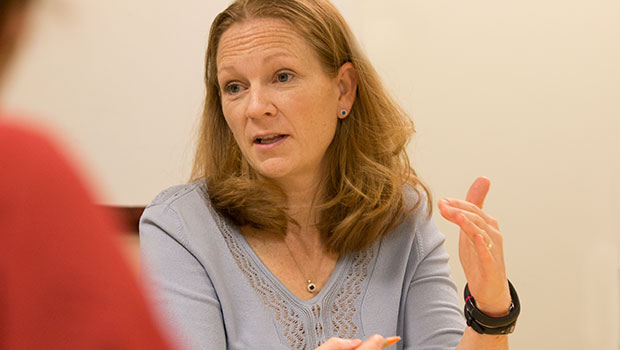What to expect after a screening breast MRI vs. mammography alone

Diana Buist and BCSC find screening MRI leads to more biopsies, finding fewer cancers, regardless of personal history of breast cancer: JAMA Internal Medicine.
Diana S.M. Buist, PhD, senior investigator at Kaiser Permanente Washington Health Research Institute, answered these questions.
Q: What did you discover?
A: Whether women had had breast cancer in the past or not, they underwent more biopsies of higher intensity after they were screened with breast magnetic resonance imaging (MRI) than after mammography alone.
My colleagues at the Breast Cancer Surveillance Consortium (BCSC) and I found this when we looked at the rates of core and surgical biopsy in the 90 days following screening MRI compared with mammography. The BCSC is the nation’s largest and most comprehensive collection of information on screening for breast cancer, funded by the National Cancer Institute (NCI).
In women who had screening mammograms compared to screening MRI, biopsy rates were 2 times higher among women with a personal history of breast cancer — and 5 times higher among women who had never had the disease. Remarkably, these more-intensive breast biopsies did not result in higher cancer yield. And women’s risk for breast cancer did not explain the differences in core and surgical biopsy rates between MRI and mammography, as we published in “Breast Biopsy Intensity and Findings Following Breast Cancer Screening in Women With and Without a Personal History of Breast Cancer” in JAMA Internal Medicine.
Q: For which women is screening with MRI advised?
A: National guidelines from the American Cancer Society, the American College of Radiology and National Comprehensive Cancer Network recommend breast MRI in subgroups of women based on breast cancer risk factors including lifetime risk of breast cancer. But we found significantly higher biopsy rates following MRI regardless of a woman’s individual risk of breast cancer.
Q: What happens after screening?
A: If mammography suggests cancer might be present, a more definitive answer usually comes from follow-up diagnostic mammography, ultrasound, or both. By contrast, after a screening MRI that suggests cancer, the next step for resolution is usually either short-interval follow-up MRI or biopsy.
Q: Did your results surprise you?
A: Previous research led us to expect we might observe more breast biopsies following breast cancer screening with MRI compared with mammography alone, and that’s what we found. But we had also expected that we would observe less invasive biopsies with more cancers detected. Instead, after screening MRI we found more biopsies that were more invasive surgical and core biopsies, with lower cancer yield.
Q: What does this mean for women and their care providers?
A: We hope this new, useful information will get into the hands of care providers who are counseling women about different breast cancer screening strategies. Then they’ll know more about what to expect when they choose how to screen for breast cancer. That’s a good thing. And we hope that women will be informed that if they choose to include MRI in their screening, their likelihood of undergoing a core or surgical breast biopsy is significantly higher than if they choose mammography alone, with a lower likelihood of clinically actionable findings.
Q: What is special about your study?
A: Our study is large: We studied more than 800,000 women who underwent more than 2 million breast cancer screening exams (mammography and/or breast MRI) in community practice. We looked at biopsy rates and cancer yield in the 90 days following screening among women with and without a personal history of breast cancer. This is really different from prior studies that look at the “performance” of screening exams, which incorporate radiologists’ exam interpretation and follow women to see if they have a cancer diagnosed within 12 months.
Q: What’s next?
A: Our findings support the need to define and identify the appropriate selection of women for MRI screening to minimize the harms in women who are at low risk for breast cancer. We want to ensure an acceptable ratio of benefit to harm for using breast MRI in breast cancer screening. We need to use this technology more appropriately and do a better job of using MRI in women who will benefit from it. To do that, we need to do more research to pinpoint which women will benefit from screening MRI — and who won’t.
Our goal is risk stratification so that we can personalize screening strategies for women based on their personal factors and risk.
Learn more about Kaiser Permanente Washington Health Research Institute. Sign up for our free monthly newsletter.


